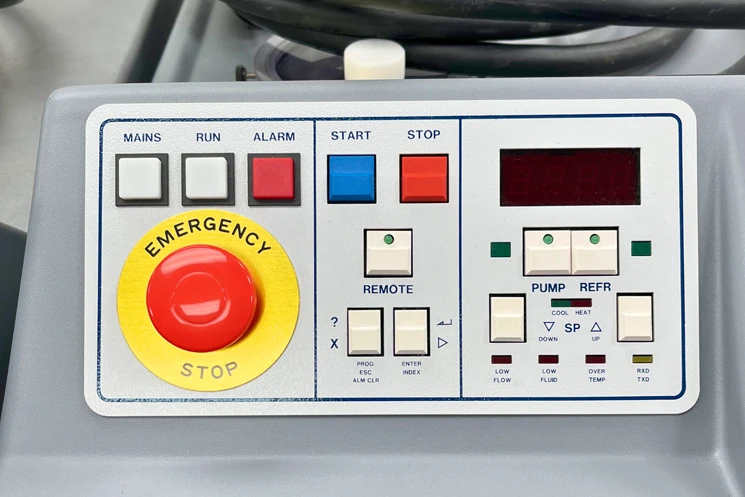Asset management is a crucial practice for any organization that wants to maintain control over its resources, minimize costs, and maximize efficiency.
This article will go into what asset management is, its benefits, and why it’s essential for businesses, schools, and other institutions to use custom asset tags effectively.
Understanding Asset Management
Definition and Scope
Asset management refers to the systematic process of developing, operating, maintaining, and upgrading assets cost-effectively. It involves tracking and managing physical assets such as equipment, vehicles, and machinery to ensure they are used efficiently and effectively.
The goal is to maximize the value of these assets throughout their lifecycle.

Types of Assets Managed
Different types of assets require different management strategies. Commonly managed assets include:
- Fixed Assets: Buildings, land, and major equipment.
- Movable Assets: Vehicles, furniture, and smaller equipment.
- Digital Assets: Software licenses, digital files, and IT hardware.
Each category requires specific tracking methods and management techniques to ensure optimal performance and longevity.
Benefits of Asset Management
Improved Efficiency and Cost Savings
Effective asset management can lead to significant improvements in operational efficiency and cost savings. By keeping track of all assets and their conditions, organizations can:
- Reduce Downtime: Scheduled maintenance and timely repairs prevent unexpected breakdowns.
- Optimize Utilization: Ensuring assets are used to their fullest potential without overuse.
- Eliminate Redundancies: Identifying and disposing of redundant or obsolete assets saves storage costs and improves space utilization.
Risk Management and Compliance
Asset management also plays a critical role in risk management and regulatory compliance. Properly managed assets reduce the risk of accidents and failures, which can lead to costly legal issues and regulatory fines.
By keeping detailed records of asset usage and maintenance, organizations can demonstrate compliance with industry standards and regulations.
Key Components of Asset Management
Asset Lifecycle Management
Asset lifecycle management involves overseeing an asset from its acquisition to its disposal. This includes:
- Acquisition: Choosing the right assets based on cost, quality, and utility.
- Operation: Using the assets efficiently and maintaining them properly.
- Maintenance: Performing regular inspections and repairs to extend the asset’s life.
- Disposal: Retiring and disposing of assets in an environmentally responsible manner.
Technology and Tools in Asset Management
Modern asset management heavily relies on technology to track and manage assets. Some essential tools include:
- Asset Management Software: Provides a centralized database for tracking assets, scheduling maintenance, and generating reports.
- Barcodes and QR Codes: Used for labeling assets and simplifying tracking through scanning.
- RFID Tags: Offer advanced tracking capabilities, allowing for real-time location monitoring.
- Custom Asset Tags: Essential for identifying and managing assets. These tags can include barcodes, serial numbers, and other identifying information

FAQs
How Does Asset Management Differ from Inventory Management?
Asset management focuses on the tracking and management of physical assets over their lifecycle, whereas inventory management deals with the control of items that are meant to be sold or used in production.
While inventory management is about stock levels and order fulfillment, asset management is concerned with the utilization and maintenance of assets.
What Are the Best Practices for Effective Asset Management?
Effective asset management involves several best practices, including:
- Regular Audits: Conducting routine checks to verify the presence and condition of assets.
- Detailed Record Keeping: Maintaining accurate records of asset usage, maintenance, and location.
- Utilizing Technology: Leveraging asset management software and custom asset tags to streamline tracking and reporting.
- Training Staff: Ensuring that employees understand the importance of asset management and know how to use the tools and systems in place.
How Can Technology Improve Asset Management?
Technology enhances asset management by providing tools for accurate tracking, real-time monitoring, and efficient reporting. Asset management software can automate many tasks, reducing the risk of human error and freeing up staff to focus on other critical activities.
Technologies like barcodes, QR codes, and RFID tags make it easier to keep precise records and quickly locate assets.
What Role Does Data Play in Asset Management?
Data is fundamental to effective asset management. Accurate data allows organizations to make informed decisions about asset usage, maintenance, and replacement. By analyzing data, organizations can:
- Predict Maintenance Needs: Use historical data to predict when an asset will require maintenance, helping to avoid unexpected failures.
- Optimize Asset Utilization: Identify underutilized assets and reallocate them to where they are needed most.
- Plan for Replacements: Determine the best time to replace assets before they become a liability.
- Ensure Compliance: Maintain records that demonstrate compliance with regulations and industry standards.
Asset Management Conclusion
Asset management is a critical function for organizations of all types and sizes. By effectively managing assets, businesses can achieve significant cost savings, improve operational efficiency, and ensure compliance with regulatory requirements.
Custom asset tags play a crucial role in this process, providing the necessary tools for accurate tracking and management of assets.
For businesses looking to enhance their asset management capabilities, implementing a robust asset management system with custom asset tags is essential. At Maverick Label, we offer a range of high-quality asset tags designed to meet the unique needs of our customers.
To learn more about our asset tags and how they can benefit your organization, visit our asset tags page. Let us help you take control of your assets and improve your overall asset management strategy.
Learn more about asset tag best practices from our article “Asset Tagging Best Practices“.



